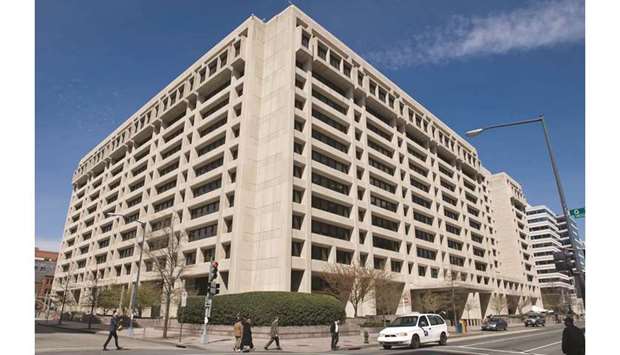The government of Pakistan has given an understanding to the International Monetary Fund (IMF) to move to a single value-added tax (VAT) regime in the country as part of an overall medium-term macroeconomic framework envisaging Rs1.25tn incremental federal and provincial revenues.
This would mean an additional revenue effort matching about 2.6% of GDP (gross domestic product) over a period of three years.
Federal taxes are committed to be increased by 2.3% (about Rs1.08tn) during the three-year reform process under the IMF programme, starting with 1.1% of GDP during the fiscal year 2019-20. This will be followed by 0.9% of GDP additional revenue generation in FY21 and 0.3% in FY22.
Provincial taxes are committed to be raised by 0.1% of GDP every year to achieve 1.6% tax-to-GDP ratio during FY22 from the current financial year’s ratio of 1.3%.
Broadly, the tax measures expected to deliver the targets include “drastic reduction in tax expenditures by removing exemptions and excessive tax credits from incomes tax, sales tax and federal excise duty law and moving to a single sales tax (VAT) regime by doing away with special procedures and reduced rate taxation”, according to official papers.
Officials said these medium-term fiscal projections were based on annualised yield of key measures under the IMF programme.
For example, the two sides have broadly agreed to increase the overall federal revenue by 1.1% of GDP in the first year (2020) of the Fund programme.
Out of this, a major chunk of 0.4% (more than Rs175bn) of GDP will accrue with the shift to a single VAT regime and 0.3% (Rs130bn) through removal of exemptions and rationalisation of tax credits.
The remaining 0.4% (Rs175bn) is expected through strengthening of FBR (Federal Board of Revenue) formations, cleansing of databases/integration/data mining, efficient enforcement/process reengineering, taxpayer facilitation/education, etc. That would mean about Rs43.5bn (0.1%) from each of the four heads above.
The next year’s (FY21) additional revenues of 0.9%c of GDP are targeted through further removal of exemptions and rationalisation of tax credits and single VAT regime (0.2%c of GDP or Rs100bn each), followed by 0.1% (Rs50bn) from integration of goods and services tax, FBR strengthening, use of technology, facilitation, etc.
Based on these details, “the medium-term framework envisaged revenue effort of 1.1% in FY20, 0.9% in FY21 and 0.3% in FY20 that would take FBRs tax-to-GDP ratio to around 14%” of GDP.
Other policy and reform initiatives will include a reduction in the number of withholding taxes which are negatively affecting the use of banking sector or have an insignificant contribution towards revenue, besides freezing corporate tax rates at 30% or 29% and increasing the expanse of federal excise duty.
This will also need the strengthening of FBR field formations through investment in IT/physical infrastructure and training by increasing investment from the current 0.68% of revenue collection to at least 1.25% in three years’ time.
In some countries, investment in revenue machinery and infrastructure goes as high as 6-7% of the total revenue collection, an FBR official explains.
The government has conceded to the IMF that the present arrangement of four provincial and one federal authorities looking at goods and services tax has increased the cost of doing business in an exponential manner and large businesses have been complaining about the compliance cost.
“In three years’ time, we will move to a single tax collection agency with single return and single auditing authority to cut down on compliance costs,” the government has told the IMF.
This will be balanced through a revision of business processes, administrative structures and efficient dispute resolution mechanism with proactive settlement of disputes through the alternative dispute resolution (ADR) system.
These efforts will be coupled with taxpayers’ education and facilitation by developing android apps for filing of returns and payment of taxes.
Cleansing of utilities database and data of immovable property ownership will done to help the FBR identify under-reporting and non-reporting of incomes and sales through use of data mining.
The federal government and the IMF generally agreed that the provincial governments’ role in resources mobilisation was central considering that the constitutional authority to collect sales tax on services and agriculture income tax was with the provincial governments.
The provincial tax collection for FY18 was Rs402bn, which was around 1.2% of GDP. This includes taxation on the services sector of Rs224bn (0.6% of GDP) and income tax on agriculture of Rs1.6bn, which is very negligible in relation to GDP.
As such, with efforts the provinces would increase taxation on these two sectors. The third area which provides great potential for provincial tax is urban immovable property tax which remains largely untapped.
The provinces projected tax collection for FY19 at Rs523bn (1.3% of GDP), which is 0.1% higher than that of FY18.
The medium-term macroeconomic framework suggests an increase in provincial taxation by 0.1% of GDP each year.
The provincial tax-to-GDP ratio, which is projected at 1.3% for FY19, will reach 1.6% of GDP in FY22. The Fiscal Co-ordination Committee already notified will be assigned to monitor the progress.

Pedestrians walk past the International Monetary Fund building in Washington, DC. The government of Pakistan has given an understanding to the IMF to move to a single value-added tax regime in the country as part of an overall medium-term macroeconomic framework envisaging Rs1.25tn incremental federal and provincial revenues.
